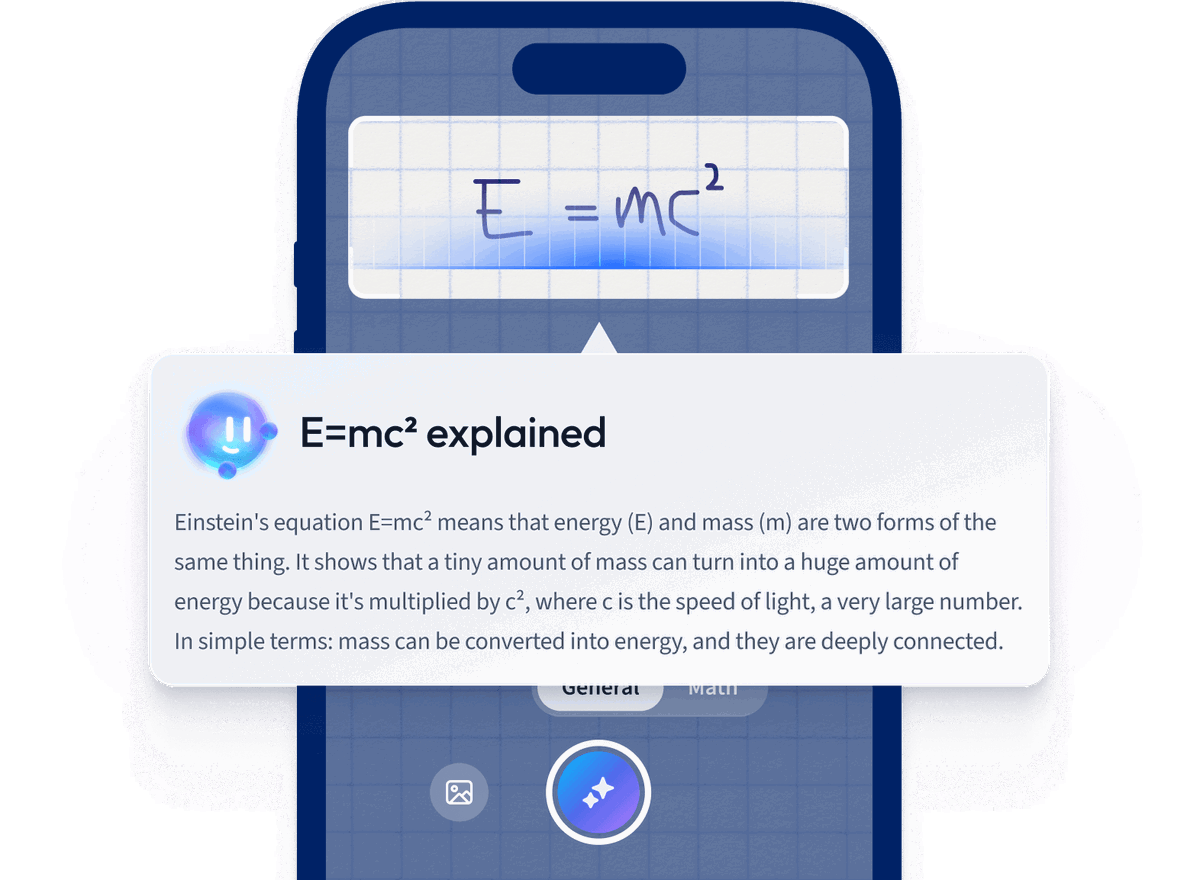In this article, we will learn all about the Gibbs free energy of formation: what it is, what is tells us, and how to calculate it.
This article is about the free energy of formation.
First, we’ll define the free energy of formation.
Then, we’ll relate it to Gibbs Free Energy and Enthalpy.
Next, we’ll look at a free energy formation chart and equation.
Lastly, we’ll go over examples of free energy of formation, featuring water and ammonia.
The Free Energy of Formation Definition
Free energy, G, is the energy available to do work.
The (standard) Gibbs free energy of formation (ΔGf°) refers to the free energy change when 1 mole of a substance is formed from its component elements in their reference states.
The reference state is the most thermodynamically stable state at standard temperature (1 bar) and standard temperature (25 °C). It is used as a reference point to calculate certain properties under a given set of conditions.
The formula for the Gibbs free energy of formation is:
$$\Delta G^\circ_f=\Sigma \Delta G^\circ_{f\,(products)}- \Sigma \Delta G^\circ_{f\,(reactants)}$$
The "Σ" symbol is called a summation symbol. What this means is that all the GIbbs free energy values for the products/reactants are added. For example, this would look like: $$\Sigma \Delta G^\circ_{f\,(products)}=\Delta G^\circ_{f\,a}+\Delta G^\circ_{f\,b}$$ Where a and b are products
For example, here is the Gibbs free energy of liquid water:
$$2H_{2\,(g)} + O_{2\,(g)} \rightarrow 2H_2O_{(l)}:\,\,\,\Delta G^\circ_f=-228.6\frac{kJ}{mol}$$
Meanwhile, the standard enthalpy, or heat of formation (ΔHf°), is the heat absorbed or released when 1 mole of a substance is formed from its respective elements in their standard states (Standard elements in their reference form have a free energy of formation of zero).
Both the standard enthalpy of formation (ΔHf°), and entropy of formation (S°), relate to Gibbs free energy, as we use the Gibbs free energy equation to calculate both entropy and enthalpy together.
Enthalpy is the total change in heat within a system when pressure is constant. While entropy is the randomness or disorder of a system.
For more information regarding enthalpy and Gibbs free energy, please refer to our “Enthalpy” and “Gibbs Free Energy” articles.
The Free Energy of Formation Equation
Now that we understand each term in the free energy of formation equation, we can begin to understand the equation itself.
$$ \Delta G^\circ = \Delta H^\circ - T \Delta S^\circ $$
Where
- \( \Delta G^\circ \) is the change in free energy
- \( \Delta H^\circ \) is the change in enthalpy or heat
- \(T\)\( \Delta S^\circ \) is the change in entropy (S) and temperature (T)
The free energy of formation basically refers to the change in Gibbs Free Energy when 1 mole of product is formed.
An important question regarding this equation is:
What does \(\Delta G\)'s sign say about the equation?
\(\Delta G\) tells you the direction of a chemical reaction and if it's spontaneous or not.
A spontaneous reaction is a reaction that proceeds on its own without addition of external energy. The reaction favors the formation of products.
A non-spontaneous reaction requires an addition of external energy. The reaction does not favor the formation of products
\(\Delta G\) > 0 exergonic reaction = spontaneous
\(\Delta G\) = 0 the system is at equilibrium
\(\Delta G\) < 0 endergonic reaction = not spontaneous
At equilibrium, there is no net change in the concentration of products and reactants.
$$\Delta G^\circ=\Sigma \Delta G^\circ_{products}- \Sigma \Delta G^\circ_{reactants}$$
You find the free energy of formation in a reaction by subtracting the sum of the free energy of formation for each reactant from the sum of the free energy of formation for each product.
On top of knowing about the Gibbs free energy signs, we should also understand what exergonic and endergonic reactions are:
 Fig. 1 - Exergonic vs. Endergonic reaction. Daniela Lin, StudySmarter Originals.
Fig. 1 - Exergonic vs. Endergonic reaction. Daniela Lin, StudySmarter Originals.
Exergonic means that energy is released to the surroundings, as the bonds being made are stronger than the ones being broken.
In contrast, endergonic signifies that the energy is absorbed from the surroundings since the bonds being broken are stronger than the ones being made.
Exergonic and endergonic reactions are similar to exothermic and endothermic reactions. Exergonic/endergonic is a measure of both enthalpy and entropy (i.e., free energy), while exothermic/endothermic is only a measure of enthalpy.
The Free Energy of Formation Table and Chart
The free energy of formation table and chart is given to establish a better understanding of how the Gibbs free energy equation, the free energy of formation, and enthalpy play a role when it comes to chemical reactions.
The chart below contains some of the most common compounds and their free energies of formation. Later on, we’ll go over some examples utilizing this chart.
 Fig. 2 - The Free Energy of Formation Table and Chart of the most common compounds. Daniela Lin, Study Smarter Originals.
Fig. 2 - The Free Energy of Formation Table and Chart of the most common compounds. Daniela Lin, Study Smarter Originals.
Some common free energy data are displayed in alphabetical order above. Notice how the elements in their standard states have a free energy formation of zero.
Free Energy of Formation Examples
Free Energy of Formation of Water
Calculate the free energy of formation for 5 moles of water.
To calculate the free energy formation of water we first write out the reaction for the formation of 1 mole of water:
\(H_2 (g)+ \frac {1} {2} O_2 (g) \longrightarrow H_2O (l) \)
\( \Delta G^\circ_f \) = -237.129 kJ/mol according to our table from earlier.
If we instead form 5 moles of water then our equation becomes:
\(5H_2 (g)+ \frac {5} {2} O_2 (g) \longrightarrow 5H_2O (l) \)
\( \Delta G^\circ_f \) = 5 x -237.129 kJ/mol= -1,185.7 kJ/mol
The free energy of the formation of water is already given by our table. But notice that for 5 moles of water we just multiply by 5 and for decomposition we just reverse the sign.
For the decomposition of water, the sign would just change to +237.129 kJ/mol as decomposition is the opposite of formation.
Gibbs Free Energy of Formation of Ammonia
Calculate the free energy of formation of ammonia.
To calculate the free energy of ammonia we first write out the reaction for the formation of ammonia:
\(N_2 (g) + 3H_2 (g) \longrightarrow 2NH_3 (g) \)
\( \Delta G^\circ_f \) = -16.45 kJ/mol for \(NH_3\) according to our table from earlier.
\( \Delta G^\circ_f \) = 0 for both \(N_2\) and \(3H_2\) as they're both in their elemental standard states.
Since there are 2 moles of \(NH_3\) formed in our balanced equation, we need to multiply -16.45 by 2, which makes the answer:
\( \Delta G^\circ_f \) = -32.90 kJ/mol.
The free energy of the formation of ammonia is already given in our table. But notice for nitrogen and hydrogen gas the free energy of formation is zero due to them being in their standard elemental states.
We’ve reached the end of the article. Now you should understand what the free energy of formation is, why it works, and how to apply it. For more practice, please head over to our flashcards section!
Free Energy of Formation - Key takeaways
The free energy of formation refers to the energy change when 1 mole of a substance is formed.
The standard enthalpy or heat of formation is the heat absorbed or released when 1 mole of a substance is formed from its respective elements in their standard states.
Both the standard enthalpy of formation and free energy of formation relate to Gibbs free energy, as we use Gibbs free energy equation to calculate both entropy and enthalpy together.
Exergonic means that energy is released to the surroundings, as the bonds being made are stronger than the ones being broken. In contrast, endergonic signifies that energy is absorbed from the surroundings because the bonds being broken are stronger than the ones being made.
References
- Libretexts. (2022, April 3). 16.14: The Free Energy. Chemistry LibreTexts.
- Libretexts. (2022, February 14). Gibbs (Free) Energy. Chemistry LibreTexts.
How we ensure our content is accurate and trustworthy?
At StudySmarter, we have created a learning platform that serves millions of students. Meet
the people who work hard to deliver fact based content as well as making sure it is verified.
Content Creation Process:
Lily Hulatt is a Digital Content Specialist with over three years of experience in content strategy and curriculum design. She gained her PhD in English Literature from Durham University in 2022, taught in Durham University’s English Studies Department, and has contributed to a number of publications. Lily specialises in English Literature, English Language, History, and Philosophy.
Get to know Lily
Content Quality Monitored by:
Gabriel Freitas is an AI Engineer with a solid experience in software development, machine learning algorithms, and generative AI, including large language models’ (LLMs) applications. Graduated in Electrical Engineering at the University of São Paulo, he is currently pursuing an MSc in Computer Engineering at the University of Campinas, specializing in machine learning topics. Gabriel has a strong background in software engineering and has worked on projects involving computer vision, embedded AI, and LLM applications.
Get to know Gabriel













